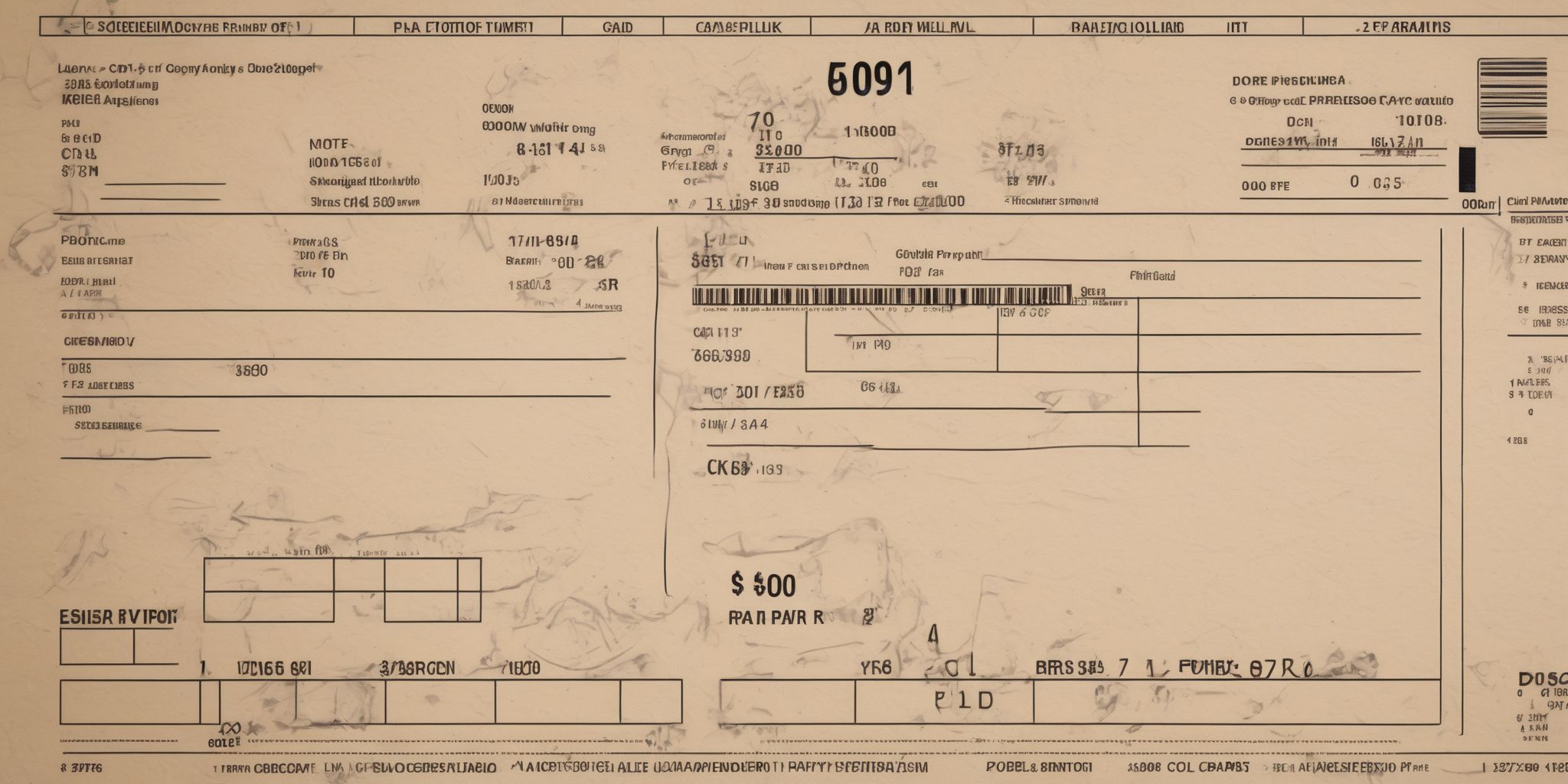Maximizing Exchange-Traded Funds Returns: Tips to Enhance Investment Profits
Hey there, savvy investors! If you're familiar with the world of investing, chances are you've heard of exchange-traded funds (ETFs). These nifty financial instruments have been gaining popularity in recent years, offering a convenient and cost-effective way to diversify your portfolio. But here's the thing: simply investing in ETFs is not enough to guarantee handsome returns.
If you're looking to maximize your investment profits, it's time to roll up your sleeves and learn some expert tips andtricks.
In this article, we'll dive into the world of ETFs and share valuable strategies to help you enhance your returns. So, fasten your seat belts and get ready to unlock the potential of your ETF investments like a pro!
What are Exchange-Traded Funds?
Exchange-Traded Funds are investment funds that are traded on stock exchanges, similar to individual stocks. They offer investors an opportunity to gain exposure to a diverse range of assets such as stocks, bonds, or commodities in a single investment. ETFs are designed to track the performance of a specific market index or sector, offering investors an easy way to invest in a particular industry or market segment.
By buying shares of an ETF, investors can participate in the returns of the underlying assets without having to purchase them individually. This provides diversification, liquidity, and flexibility, making ETFs a popular choice for investors seeking to maximize their returns.
Advantages of Investing in ETFs
Investing in ETFs offers several advantages for maximizing exchange-traded funds returns. Firstly, ETFs provide instant diversification by holding a basket of various securities, reducing the impact of individual stock performance. This helps mitigate risks and potentially enhances returns.
Secondly, ETFs are traded on the stock exchange, allowing investors to buy and sell shares throughout the trading day. This provides flexibility and liquidity, enabling investors to react promptly to market opportunities or manage risks effectively.
Furthermore, ETFs often have lower expense ratios compared to mutual funds, which means more of your investment's growth potential remains in your pocket.
Understanding Exchange-Traded Funds Returns
- Exchange-Traded Funds returns represent the gains or losses an investor can expect from their ETF investments.
- ETF returns are primarily influenced by the performance of the underlying assets held by the fund.
- The composition of an ETF, such as the mix of stocks, bonds, or commodities, impacts its returns. For example, an ETF focused on technology stocks may experience higher returns if the sector performs well.
- Factors like expense ratios and tracking errors also affect ETF returns. Low expense ratios can help maximize returns by reducing costs.
- Investors should assess historical returns and performance metrics to gauge the consistency and potential future returns of an ETF.
- Additionally, staying aware of market trends and economic factors can help investors anticipate potential shifts in ETF returns. By understanding these dynamics, investors can have a better grasp on how their investments may perform.
Maximizing Returns on Your ETF Investments
Choose ETFs with Low Expense Ratios
Choosing ETFs with low expense ratios is an important factor in maximizing exchange-traded funds returns. Expense ratios directly impact the overall profitability of your investment. By opting for funds with lower expense ratios, you can retain a larger portion of your returns. This is especially true for long-term investors who aim to compound their gains over time. A lower expense ratio allows for higher compounding potential, resulting in potentially greater returns.
For example, a 1% reduction in expense ratio can translate to significant savings over the course of several years. Therefore, when selecting ETFs, it is wise to consider those with low expense ratios to enhance your investment profits.
How Expense Ratios Impact ETF Returns
- Expense ratios play a significant role in determining the overall returns of exchange-traded funds.
- A higher expense ratio means a larger portion of the investment's returns will be consumed by fees and expenses.
- Lower expense ratios can lead to higher net returns, allowing investors to retain more of their profits.
- Investors should compare expense ratios of different ETFs within the same asset class to identify those with lower costs.
- By choosing ETFs with lower expense ratios, investors can potentially enhance their investment profits and maximize their returns.
Consider Diversification and Asset Allocation
Diversification and asset allocation are important aspects to consider when aiming to maximize returns on exchange-traded fund (ETF) investments. Spreading your investments across different asset classes helps to mitigate risks and potentially increase overall returns.
For example, allocating funds to different sectors or regions can offset any losses from underperforming areas.
Additionally, diversifying within an asset class, such as investing in various industries within the technology sector, can help capture growth opportunities. By diversifying your ETF portfolio, you can increase the potential for long-term gains while reducing the impact of any specific underperforming investments.
Building a Well-Rounded ETF Portfolio
Building a well-rounded ETF portfolio is crucial for maximizing exchange-traded funds returns. Diversification across different asset classes reduces risk and can potentially enhance overall performance.
For example, including a mix of equity, bond, and commodity ETFs helps spread out investments across various sectors and market conditions.
Additionally, considering assets from different regions or countries can provide exposure to different economies and reduce concentration risk. By carefully selecting ETFs from different sectors and asset classes, investors can create a balanced portfolio that has the potential to perform well in different market environments.
Focus on Funds with Strong Historical Performance
One important factor in maximizing your Exchange-Traded Funds returns is to focus on funds with a strong historical performance. By examining the past performance of ETFs, you can gain insights into their potential for future growth. Look for funds that have consistently delivered positive returns over a sustained period. However, keep in mind that past performance is not an absolute guarantee of future success. Nonetheless, by investing in ETFs with a solid track record, you increase your chances of achieving favorable returns in the long run. Remember to review a range of performance metrics and compare funds within similar sectors to make well-informed investment decisions.
Evaluating Past Returns and Performance Metrics
Evaluating past returns and performance metrics is a vital aspect of maximizing your exchange-traded funds returns. Analyzing historical performance can provide valuable insights into the fund's potential future performance. Key metrics to consider include the fund's annualized returns, volatility, and risk-adjusted measures like the Sharpe ratio. Comparing these metrics across similar ETFs can help identify funds with a strong track record.
Additionally, examining how the fund performed during different market conditions can gauge its resilience and adaptability. By thoroughly assessing past returns and performance metrics, investors can make more informed decisions and increase their chances of achieving higher ETF returns.
Keep an Eye on Market Trends and Economic Factors
To maximize your Exchange-Traded Funds returns, it's important to keep a close watch on market trends and economic factors. Understanding the broader market conditions can help you identify potential opportunities or risks that may impact your investments.
For example, monitoring economic indicators like GDP growth, interest rates, or unemployment rates can give you insights into the overall health of the economy and potential sectors for growth.
Additionally, staying up-to-date with market trends such as technological advancements, shifts in consumer behavior, or regulatory changes can help you adjust your ETF portfolio accordingly. By staying attuned to market trends and economic factors, you can make informed decisions and potentially enhance your investment returns.
Identifying Opportunities and Risks in ETF Investing
Monitoring market trends and economic factors is crucial for identifying opportunities and risks in ETF investing. For instance, staying informed about industry-specific news and geopolitical events can give investors insights into potential growth or decline.
Additionally, analyzing key performance metrics, such as price-to-earnings ratios and dividend yields, helps evaluate the attractiveness of an ETF. It's also important to consider macroeconomic factors like interest rates and inflation, as they can impact various industry sectors differently. By staying vigilant and conducting thorough research, investors can make informed decisions to maximize their exchange-traded funds returns.
Utilize Dollar-Cost Averaging Strategy
Implementing a dollar-cost averaging strategy can be beneficial in maximizing your exchange-traded fund returns. This approach involves investing a fixed amount at regular intervals, regardless of market conditions. By doing so, you buy more shares when prices are low and fewer shares when prices are high. This strategy helps to average out the cost of your investments over time, reducing the impact of market volatility.
For example, if you invest $500 in an ETF every month, you would purchase more shares when the price is lower and fewer shares when the price is higher. Over time, this can result in an improved average purchase price and potentially higher returns.
Regular Investing for Long-Term Growth
Regular investing is a proven strategy to maximize long-term growth in Exchange-Traded Funds returns. By consistently contributing funds at predetermined intervals, you can benefit from the potential for compounding returns. This approach helps mitigate the impact of short-term market fluctuations and allows you to take advantage of cost averaging.
For example, investing a fixed amount every month ensures that you buy more shares when prices are low and fewer when prices are high. Over time, this regular investment discipline can smooth out volatility and potentially enhance your overall returns. Remember, the key is to stay committed and stick to your investment plan, regardless of market ups and downs.
Key takeaways
In order to maximize returns on exchange-traded funds and enhance investment profits, there are several useful tips to consider.
First, diversifying the ETF portfolio among different asset classes and regions can help mitigate risks and potentially increase returns.
Additionally, paying attention to expense ratios and choosing low-cost funds can save on fees and boost overall returns. It is also advisable to regularly rebalance the portfolio to maintain the desired asset allocation. Furthermore, carefully selecting ETFs with high liquidity and trading volumes can provide better market access and minimize trading costs. Lastly, staying informed about market trends and conducting thorough research on ETFs can enable investors to make well-informed decisions and increase their chances of maximizing investment profits.


